April 30, 2023 – Volume 25, Issue 4
In This Issue
- Flanigan’s Net Positive: Our First EV Road Trip
- Saluting Dubai and COP28
- EV Charging Highlights
- Virtual Power Plant Strategies
- Irrigation Canal Solar
- Salton Sea Lithium
- Long Duration Energy Storage
- Repurposing Wind Turbine Blades
- EV Charger Connectors / Plugs
- Flanigan’s Eco-Logic Podcast Updates
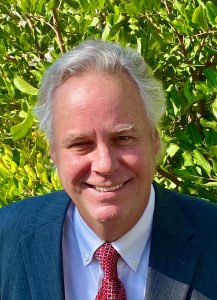
Flanigan’s Net Positive: Our First EV Road Trip
Our first EV road trip. I’ve been driving EVs regularly for over six years now, but never have dared venture out of range. But now we’re gambling on Tesla’s charger network; going all-electric in Terry’s Tesla to Vegas. It’s only 233 miles from our home to the Wynn. The Model Y’s extended range is purported to be 330 miles. So no problem right?
The mountains are formidable. We climb out of the LA valley floor, up from San Bernardino, up the Cajon Pass. I’m always struck by the scale and grandeur and majesty of nature that is so close to the madness of the urban sprawl of Los Angeles. The Tesla takes to the hills with vigor.
The route is well travelled with EVs, and well supported by the Tesla app. Our dashboard screen shows all the Tesla chargers en route and recommends a charger for us in Baker. We accept. How impressive. Our navigated trip begins.
But then we began to notice the charge level dropping faster than it should… and it made us a bit nervous. We were supposed to have 15% of our charge remaining when we got to Baker, and this began dropping… to 5%. For my gal that likes to refuel when the gas meter gets to a quarter tank, the 5% reserve was nerve-wracking.
And there we were, out in the wide open expanses of the California desert with miles to go. Lots of good music, and… one’s mind wanders. What if we run out of charge? Then we whiz by a huge and brand new Tesla charging station in Barstow, and wonder if we’ll regret passing it by. It’s a long way from Barstow to Baker with huge expanses.
Baker was the plan and its where we recharge. Read, it’s how far we make it before needing a charge. Warning. We think that the Model Y’s actual range is more like 250 miles. The car may well get 330 when gently driving around one’s neighborhood. But for our trip, the conditions were highway driving, a four-thousand foot elevation gain, and moderate air conditioning.
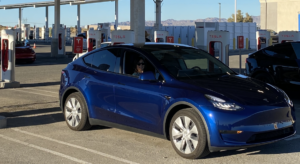
In Baker, we pull up to a major charing operation, complete with solar carports and 60 Tesla chargers. There are only six other cars there, lots of space for us. We see drivers milling about as they charge.
It was a bit unnerving when our charger did not work. We panicked a bit as our dashboard presented an error message. I asked a nearby driver who readily told me that he’d seen another car try our charger. Relieved, we followed suit and the next one was just fine.
We recharge with what is stated to be 100 miles of range, about 25 kilowatt hours. It takes about 15 minutes. The nominal charging price is 37 cents per kWh. No charge for us as we’re burning down Terry’s 10,000 miles of free charging.
I chat with an attendant taking away the trash. He tells me that another 40 chargers are going in and that I should see this place on weekends. Every spot is full with a line of cars waiting impatiently. Thank God that It’s Tuesday. We charge long enough to stroll over to the general store.
We arrive in Vegas with very little battery capacity remaining, 3% this time, really too close for comfort for us out-of-range newbies. We breathe a sigh of relief as we make it, and then again as the Wynn’s valet nonchalantly offers to charge the car for us. Nice.
On the way home we re-fuel in Barstow at an odd set of aging chargers in the back of a sketchy shopping mall. The rate there is 38 cents per kilowatt hour. We make a note for next time to stop at the bank of new chargers at the Barstow outlets.
Overall, we had a great time with our first EV road trip. We gained confidence and we are impressed at how do-able such a trip is, so much so that we have discussed letting go of our hybrid that we’ve been keeping for longer trips. Now longer trips seem possible, even exciting, in the EV and we’re thinking of a summer EV and camping adventure to Yellowstone and perhaps even Banff in the Canadian Rockies.
As this edition of EcoNet News will tell, the charging networks are opening up. We are on the path to ubiquitous EV charging throughout the country.
Quote of the Month
“The U.S. Department of Energy reports that the lithium discovered beneath the Salton Sea will, “enable the United States to meet or exceed global lithium demand for decades.””
Saluting Dubai and COP28

The beginning of the end of oil, a “transition.” Some have called COP28 monumental, others found it frustrating. At EcoMotion, we understand the viewpoints. At our core is valuing each and every increment of progress. Thanks to those there for moving the ball down the field, pushing the ball up the seemingly insurmountable mountain. Sure there have been critics, but progress was made on funding the most threatened countries, working to curb lethal methane, and discussing and articulating publicly for the first time an era of no oil, no fossil fuels. We at EcoMotion deeply appreciate the passions, smarts, and efforts of the 70,000 strong from 200+ countries that keep the focus on global climate protection. I hear that the next COP will be in Azerbaijan.
EV Charging Highlights

President Biden’s goal is for half of all vehicle sales to be EVs by 2030. That would be seven million EVs a year. We’re at about one million EVs per year right now. And two major things are happening: Many more EVs are now on the market, and charging networks are behind but working hard to keep up with the explosive growth of EV use. While Tesla has been way out front on both scores, the competition is now engaged and making affordable EVs. Non-Tesla charging stations are behind, but catching up.
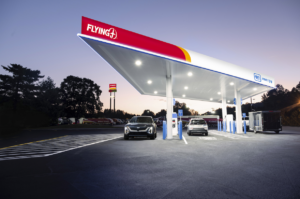
Pilot Flying J: The first 17 of Pilot Flying J and GM’s network of EV chargers are now open. The company is planning a coast to coast network of 2,000 stations, GM announced the partnership with Pilot Flying J and the fast charging network EVgo last year. Starting in the spring of next year, GM vehicle owners will be able to reserve a charger ahead of time at the Pilot Flying J stations.
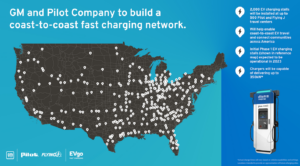
Image Courtesy of GM Newsroom
So far, the network is made up of 17 charging stations in 13 states. The goal is to operate 200 in 2024. The charging stations will be managed by EVgo and will be located at Pilot Flying J truck stops. EVgo is following in Tesla’s footsteps and building prefabricated models for its charging sites, cutting installation time in half and saving in construction costs.

Image Courtesy of Kelley Blue Book
Mercedes-Benz: Mercedes-Benz is taking a two-pronged approach. It will allow its vehicle drivers access to Tesla’s network, and it will establish its own high power charging networks. Its own network now has more than 400 charging hubs. Mercedes is planning 2,500 high power chargers in North America by the end of the decade. It wants to create a best-in-class charging experience. These chargers will be universally open to electric vehicles from all brands.
But back to the first statement: In 2024, Mercedes-Benz EV drivers will be able to access the Tesla super charger network of 12,000 chargers in North America. Mercedes-Benz drivers will see Tesla chargers show up on their dashboard screens. Furthermore, Mercedes-Benz will integrate the North American Charging Standard, NACS in its EV line-up starting in 2025.

Lucid’s RangeXchange: Take note that the Lucid Air Grand Touring claims a range of 500 miles. I test drove a Lucid Air in Phoenix in October and was terribly impressed. Talk about torque… and I am no EV torque newbie. These are premium EVs made in Arizona. Cool stuff: Lucid now features RangeXchange, Wunderbox’s bi-directional charging technology. RangeXchange allows energy to flow from Lucid Air’s battery pack to charge another vehicle with up to 40 miles of range per hour.
Imagine, a Lucid with plenty of kWh on board can rescue a fellow EV. To do so, a Lucid owner simply attaches the new Lucid RangeXchange charging adapter to the charging cable and plugs directly into the receiving car. The transfer charges at a rate of up to 9.6 kW. Who needs AAA? In related news, VW has announced that its all-electric ID family of vehicles will now offer bidirectional charging with Vehicle to Home (V2H) functionality.
Virtual Power Plant Strategies

Image Courtesy of U.S. Department of Energy (DOE) Pathways to Commercial Liftoff for Virtual Power Plants (VPPs) Report
Jigar Shah heads the U.S. DOE’s Loan Programs Office (LPO). It has a mixed reputation. Yes, there have been some failed ventures. That’s to be expected of a government program set up to support the market in ways that private money is not ready. And yes, the LPO enabled Elon Musk to successfully launch Tesla. Now the LPO, under Shah’s direction, is promoting Virtual Power Plants (VPPs). He’s under some fire for his monumental $3 billion support for VPPs, but clear in his vision.
Instead of building additional power plants to meet growing peak demand, virtual power plants are being built which pool together resources throughout the community. VPPs are based on aggregating decentralized resources – like 200, 8 kW solar systems that represent 1,600 kW of solar capacity, or 500 Tesla Power Walls all under utility control. Distributed energy resources can provide aggregated capacity during peak periods, and can also be designed and wired to serve energy resilience to host sites during grid outages.
Shah sees VPPs as a new and viable utility strategy and one that he urges the solar industry to adopt. Why? He notes that the days of Net Energy Metering are numbered. The writing is on the wall. Now the solar industry, and other distributed energy resources need to be strategic and find new forms of compensation. Instead of utility incentives and the value of net energy metering, investors in these technologies can be compensated by promoting and participating in VPPs.
Shah says that utilities are open to VPPs. He says that utilities are burying the hatchet when it comes to VPPs. They have battled the solar industry but now have to address the huge loads that will be created by electrifying buildings and mobility. VPPs are a means to reliably cut peak power. VPPs integrate a wide variety of technologies from efficiency and demand response, to solar, storage, electric vehicles, smart thermostats, water heaters, and even industrial processes. VPPS allow utilities to buy power from established VPPs that aggregate capacity. We are witnessing a shift, where utilities are redirecting their attention from peaker plants to VPPs.
The Department of Energy released a report in September 2023 titled, “Pathways to Commercial Liftoff: Virtual Power Plants. It presents the need for 80 – 160 GW of VPPs by 2030. “Large-scale deployment of VPPs could help address demand increases and rising peaks at lower cost than conventional resources…” The report finds that VPPs are concentrated in states with favorable policies and regulatory mechanisms, states that enable sales to utilities for flexible demand services in retail and wholesale markets. The leading states are California, Massachusetts, New York, North Carolina, and Texas.
In California, VPPs are supported by the Demand Response Auction Mechanism, where VPPs can sell DR to utilities; the Emergency Load Reduction Program (ELRP) that pays customers for grid services during peak periods; the Self Generation Incentive Program (SGIP), the Distributed Investment Deferral Framework which identifies behind-the-meter services to defer the need for grid upgrades; and CAISO policy that allows full participation for VPPs in the wholesale markets.
It’s billed as the largest U.S. government commitment to solar power. To support the rise of VPPs, on September 28, 2023, the LPO announced a conditional commitment for Sunnova Energy Corporation’s Project Hestia for an up to $3 billion partial loan guarantee. The loan guarantee is designed to make DERs – including solar, storage, and virtual power plant ready software – available to more American homeowners. It will enable the provision of clean energy system loans for up to 115,000 homeowners with a special focus on disadvantaged communities.
Irrigation Canal Solar
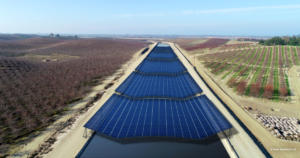
Image Courtesy of Project Nexus
The Gila River Indian Community announced that it has broken ground on a solar array that will cover a stretch of the irrigation canal south of Phoenix, providing power and cutting down on water losses through evaporation. The first phase of the project will be a 1,000-foot stretch of the canal that is expected to be complete by 2025. Its cost of $6.7 million was supported by a $517,000 grant from the U.S. Bureau of Reclamation.
Earlier this year a coalition of 125 groups urged the Department of Interior and the Bureau of Reclamation to evaluate the efficacy of “solar canals.” The request highlighted the opportunity to cover 8,000 miles of open air canals, enough for 25 GW of power and reducing evaporation by 63 billion gallons of water each year, equivalent to the annual water use of 2 million people.
Salton Sea Lithium
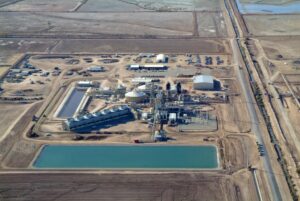
Image Courtesy of EnergySource
A new study finds that there is enough lithium beneath the Salton Sea in California to provide for the batteries of 375 million electric vehicles. No one has known how much “white gold” was at the lake. The new study quantifies a huge underground reserve of scorching hot brine located underneath the lake bed. It is one of the largest lithium deposits in the world.
The study was conducted by researchers from the Lawrence Berkeley National Laboratory of the U.S. DOE. It finds that the reserve can support the production of 3,400 kilotons of lithium, enough for 375 million EVs. There are now 2.4 million registered EVs in the United States. This number is expected to grow dramatically and there have been concerns about a shortage of lithium by 2025. The report puts those concerns in a cautiously optimistic perspective.
The current condition of the Salton Sea is a sorry state. It’s the result of environmental disaster, droughts, heat waves, and agricultural practices. These have caused its water to recede, forming dry, barren lake bed. The lake suffered massive die-offs of fish from the high salinity. And areas of dry lake bed are whipped up by the wind, causing particulate air pollution in the Coachella Valley.
Governor Newsom has called the Salton Sea the Saudi Arabia of lithium. Michael McKibben, a geochemistry professor and one of the study’s authors stated that, “This could make the U.S. completely self-sufficient in lithium so we’re no longer dependent on importing it….”
The challenge however is huge. It is how to extract lithium from the geothermal brine underneath the lake. The L.A. Times has reported on the challenge of extraction, which no one has achieved cost effectively or in an environmentally friendly way. In the past years, the CEC has awarded grants to Berkshire Hathaway Energy as well as Controlled Thermal Resources to develop extraction techniques there. GM and Stellantis are working on partnerships with CTR to secure the lithium there. Instead of open-pit drilling and creating huge evaporation pools, the research is focused on more environmentally friendly ways involving “direct lithium extraction.”
Long Duration Energy Storage

Diagram Courtesy of Form Energy
The California Energy Commission has awarded Form Energy $30 million in support of its Long Duration Energy Storage (LDES) iron air battery. The technology is able to discharge continuously for up to 100 hours… blowing out the capability of normal batteries with 4 – 6 hour discharge cycles. The award is one of three approved by the commission. Two other related CEC awards for energy resilience are for microgrid projects on tribal lands in San Diego County and Tehama County.
The 5 MW, 500 MWh iron air battery is the largest to be built in California. It will be built at a Pacific Gas and Electric substation in Mendocino County and is expected to be available for operation in 2025. CEC Commissioner David Hochschild called the multi-day energy storage system “transformational.”
The iron air battery uses the principle of reversible rusting. The battery cells contain iron and air electrodes and are filled with a water-based, nonflammable electrolyte solution. While discharging, the battery absorbs oxygen from the air and converts iron metal to rust. While charging, the application of an electrical current converts the rust back to iron and the battery emits oxygen.
As of August 2023, California has 6,600 MW of storage operating at the industry standard of 4 – 6 hours of discharge. This level is expected to reach 8,600 MW by year end. The California Energy Commission estimates that California will need 48,000 MW of storage, and 4,000 MW of LDES to meet the State’s goal of 100% renewable electricity by 2045.
Repurposing Wind Turbine Blades
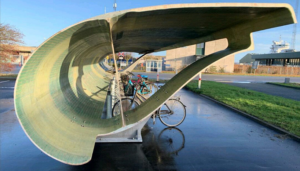
Image Courtesy of Chris Yelland
So much creativity in this space. The benches outside Great Lakes Science Center in Cleveland are in the form of droplet shaped shells, made of slices of spent wind turbine blades. In Ireland, BladeBridge is taking decommissioned blades and is building pedestrian bridges out of them. The Port of Aalborg in Denmark uses them as bike shelters. Superuse Studios in the Netherlands uses them to craft playground equipment.

Image Courtesy of Superuse Studios
Re-Wind is all over repurposing blades… into footbridges, electrical poles, cell phone towers, streetlights, signs, noise barriers along highways, bus shelters, cattle partitions and feed bunks, and even glamping pods. There’s a nice story about the co-founders of Canvus. In 2021, the two of them considered many “blade-waste solutions” and came up with 150 ideas for products to make from the blades. They settled on 11 outdoor accessors including planters, picnic tables, and benches.
There is some 906 GW of wind capacity worldwide, expected to grow by 600 GW more by 2027. As the wind industry grows, more and more blades will have to be discarded. How? Incineration and landfilling have been the fallback means of disposal. Turbine manufacturers are working on making their blades more recyclable… but many installed in 2000 are not. These will have to be incinerated, landfilled, or… repurposed.
Wind turbine blades have a lifespan of 15 – 25 years. There are now huge numbers of blades that are reaching the end of their useful lives, and this will grow. Bloom reports that despite their virtues as clean energy producers, “seemingly indestructible blades often end up in garbage dumps, left to remain for years.” Industry body, Wind Europe, estimates that there will be 25,000 metric tonnes of decommissioned blades per year by 2025, rising to 52,000 metric tonnes by 2030. The spent blades have become a contentious issue. Some Europeans are working to ban used blades from being landfilled.
Vestas Wind Systems A/S, the world’s largest producer of wind turbines, has announced that it has found a chemical which will break down the blades and their durable epoxy resin for recycling. The process was developed by Vestas, Aarhus University, and the U.S.-based Olin Corp. Its cost has not been disclosed.
Consider the structure of a wind turbine blade. Think of a blade in a cross section, droplet-shaped. The structure has three major parts: 1. The aerodynamic shell is made of laminates, ultra-sturdy, fiber-reinforced plastics, 2. The spar cap is the internal web frame, and 3. Adhesives are used along the leading and railing edges where there are seams in the two halves of the shell. Each blade is 150-feet long on average and weighs a dozen tons.

Diagram of Blade Structure Courtesy of https://aiche.onlinelibrary.wiley.com/doi/10.1002/ep.13932
Repurposing the blades saves the energy required to make new materials. In Ireland, use of the blade bridge was estimated to have offset 800 kilograms of CO2 emissions that would have occurred in the production of the steel girders for a new bridge. And the main alternative to landfilling the spent blades, is to burn them, which creates pollution.
AnMet, Poland’s blade bridge company, points out the features of the blades: they are lightweight, have great strength, all weather durability, all good features for engineering support structures. Its blade bridges are designed to last a century. Szoprotawa is the small town in western Poland where the first blade bridge was installed and put in service.
Standardizing EV Charger Connectors / Plugs
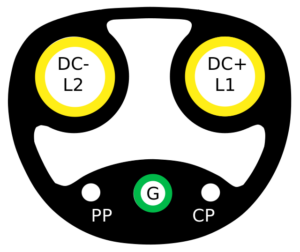
Hot topic; EV charger connectors! Plugs! Are there different types of plugs?
When first drove EVs in 1998, I was driving the General Motors EV 1. Its original name was the “Impact,” but that sounded like a car crash versus something appealing! The Impact had a paddle Type 3 charger… a plug form that is now completely obsolete.
To date, there have been several dominant EV charger plugs that offer different variations to accommodate single, double, and three-phase AC power, as well as DC fast charging:
- Type 1 is also known at SAE J1772… or just the J-Plug. It takes single phase power only and provides Level 2 charging.
- Type 2 is also known as the SAE J3068. It has seven pins and allows for three-phase current.
- CCS Combo 1 is a variant on the Type 1 charger… adding two more pins for DC fast charging.
- CCS Combo 2 is a variant of Type 2 with two extra pins to allow for DC fast charging.
- CHAdeMO is being phased out. This plug has 10 pins.
- NACS: Tesla has developed its own connector and in 2022 proclaimed it to be the North American Charger Standard, the J3400.
God news: Coming soon is standardization for EV charger plug configurations. The new standard being developed by SAE – the Society of Automotive Engineers — is the Tesla charger, the J3400. Given Tesla’s predominance, the Society elected to support standardization around the Tesla NACS charger, the J3400.
Actually, standardization grew from the auto industry. Apterra was the first to adopt the new standard. Then Ford shocked the market by announcing that it would produce cars with the J3400 by 2025. Then GM followed suit, as did many other major auto manufacturers. Volkswagen, Audi, Porsche, and Scout Motors announced just days ago that it planned to use the NACS for future vehicles. All of these companies will make the J3400 their standard in their electric vehicles beginning in 2025. In the interim, they will offer adaptors for the J3400 plug.
Note that Tesla developed Magic Dock charging stations in Europe that had dual ports, one for CCS Combo and the other for the NACS plug. There are ten Magic Dock stations in America now, and there are 42 planned. Tesla will likely continue to build out this dual plug capability in part to access infrastructure subsidies available from California and the U.S. Government for chargers that include CCS1 connectors.
Flanigan’s Ego-Logic Podcast Updates
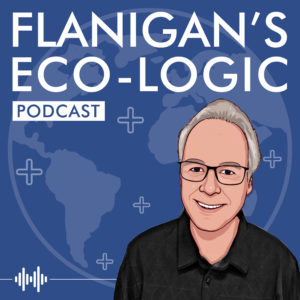
Use the links below to check out our recent podcasts. And you can always go to Spotify and type in “Ted Flanigan” to find our library of podcasts.
Recently Released:
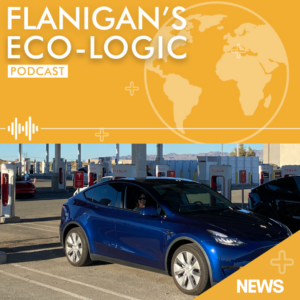
In EcoNet News, Volume 25, Issue #12, Ted shares his first EV road trip experience in a Tesla from Los Angeles to Las Vegas. He salutes COP28 in Dubai, and highlights EV charging. He also highlights virtual power plant strategies, irrigation canal solar, salton sea lithium, long duration energy storage, repurposing wind turbine blades, and standardizing EV charger connectors / plugs.
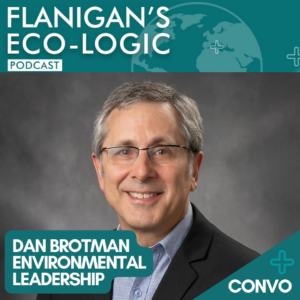
In this episode of Flanigan’s Eco-Logic, Ted speaks with Dan Brotman, Mayor of Glendale, CA. Dan has had a career in international finance, is an educator, and an activist.
He spent over 20 years in the field as an economist at the Federal Reserve and in various finance roles at Cisco Systems. He lived in Asia for 18 of those years, starting off in Hong Kong, then Singapore, and then in Shanghai. In 2015, Dan moved to Glendale to share his passion for economics as a professor at Glendale College. Alongside his academic endeavors, Dan co-founded the Glendale Environmental Coalition to push for a greater focus on sustainability.
He was first sworn in as a Glendale City Council Member in April 2020 and was named Mayor in April 2023. Dan aims to apply his finance experience and environmental passion to create a vibrant and prosperous community for all Glendale residents. He and Ted discuss the Grayson Power Plant debate, and how the utility went from the initial proposal of 260 MW to less than 60 MW with engines that can only be operated 15 percent of the time, a huge accomplishment under his leadership!
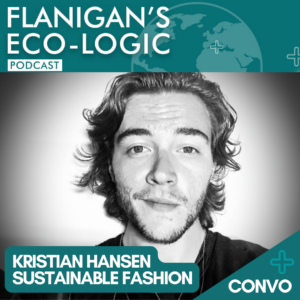
In this episode of Flanigan’s Eco-Logic, Ted speaks with Kristian Hansen, aka “the jeans guy,” Founder and CEO of Slø Jean Company, a denim power house on a mission to tackle fast fashion issues within the industry.
Kristian shares his story with Ted, when he went thrifting during the pandemic and accidentally bought a pair of women’s jeans. In the process, he went viral, with his story resonating with nearly everyone he speaks to, boasting 700K followers and 6.8M likes on TikTok. Fast forward to today, that experience kicked off a series of events that lead to the founding of Slø, which has redefined what it means to build companies through community. With a remarkable $360,000 pre-seed funding, a 100,000-strong waitlist (projected $10M revenue), and zero ad spend, he and his team are igniting the slow fashion revolution.
He and Ted discuss navigating sustainability in an industry built on exploitation and waste, pioneering eco-conscious capitalism to combat the climate crisis, leveraging consumer power and data, and the importance of community building vs. traditional marketing.
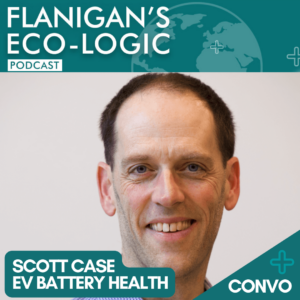
In this episode of Flanigan’s Eco-Logic, Ted speaks with Scott Case, Co-Founder and CEO of Recurrent EV / Auto. Recurrent is working to define the health of electric vehicle batteries by collaborating with thousands of EV drivers and introducing advanced machine learning.
He shares with Ted that he came into auto through the electrical grid and his realization that the new technology of EVs meant new challenges and lots of unanswered questions, as used EV car buyers don’t yet have the tools to shop for them. Unlike vehicles with combustion engines, where the odometer read is a key measure of the car’s life, mileage is not the key indicator of an EV’s value.
For EVs, it’s all about battery health and understanding the available range in different conditions. So, he and his team are supporting the secondary market for EVs by helping people evaluate and buy used electric cars with confidence. By providing more transparency and confidence in pre-owned electric car transactions, Reccurent’s mission is to accelerate the overall adoption of electric vehicles. This is key to reducing the 20% of U.S. carbon emissions that are currently produced by light-duty combustion engine vehicles.
